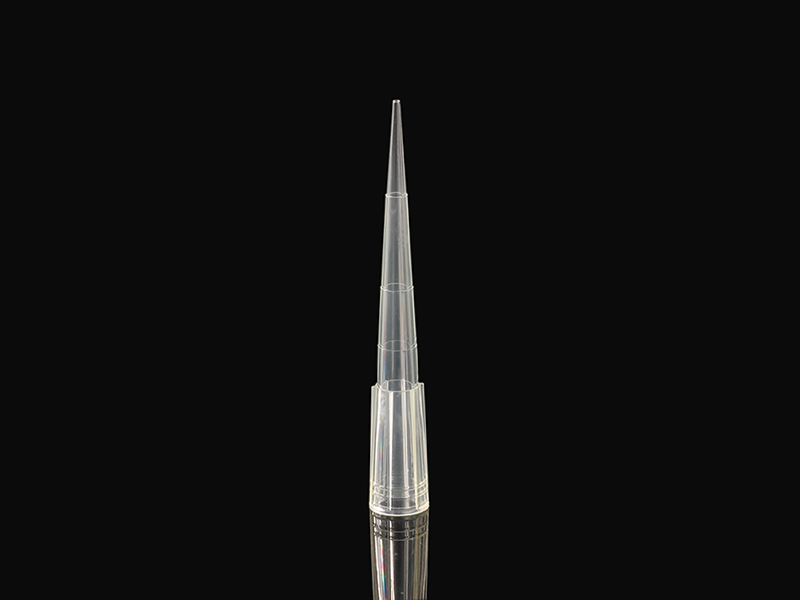Graduated Pipette Tip
When choosing the right type of pipette tip for your lab, you should first consider the precision and accuracy it offers. The wrong tip will waste reagents and samples, and could even result in repetitive stress injuries. There are several tips available, each with different sizes, shapes, and designs. Having the right size and shape of pipette tip will make your work easier and more precise. Read on to learn more about each type.
The Graduated Pipette Tips manufactured by Mingji have a fine tip that fits into micro tubes. Graduated tips feature a smooth inner surface and have graduated end points for visual checking of pipetting accuracy. They can be purchased in bulk or racked systems. These tips are made of virgin polypropylene and RNase-free materials. They can be used with many pipettes, including those designed for high-throughput applications and 96-well standard.
These pipettes have graduated tips, which vary in length from 15-30 mm to 50-65 mm. Regardless of the type, each tip is compatible with all common pipette tips. They have a ring mark at the major graduations for readability. These pipettes have full ring marks at all major graduations and a flexible screen stencil that ensures volume markings match calibration marks at intermediate volumes. They are also autoclavable.
The two main types of graduated pipettes are Mohr and Serological. Both types have bi-directional graduations and deliver a variety of volumes. In addition, both have color-coded stripes for identification. The graduations on a Mohr pipete are located above the tip, while the marks on a Serological pipette are at the end of the tip. This difference allows the user to control the volume and accuracy of the graduated pipettes with ease.
Long Pipette tip
A long pipette tip can be used for a wide variety of applications. Designed to fit a wide variety of pipetting equipment, these tips can eliminate the risk of cross contamination and ensure that the pipette will work efficiently. They are particularly useful for use in deep well blocks and microcentrifuge tubes. They are also an excellent option for supporting the targeted pipetting of small wells. Moreover, the tips' length allows them to be used more comfortably in a lab setting and help users pipette closer to the bench. They help to reduce strain on the arm.
The quality of a long pipette tip depends on several factors. First, the shape of the tip should be appropriate for the pipette barrel. A long pipette tip will fit the pipette barrel without sticking out or becoming too narrow. A longer tip will also fit a wide range of pipette barrels. Secondly, the tip should be durable and resistant to wear and tear. In addition to the length, you should also look for features such as filtration and hydrophobic. If your work requires high accuracy and precision, make sure to purchase a universal tip.
To avoid contaminating your samples, ensure that you use sterile pipettes. Biological work requires the pipette to be sterilized. For this, filters are added to the pipette. They also prevent the retention of liquid by the tip surface. Generally, pipettes are used in high-tech science centers and university labs. Over the years, they have evolved to meet the demands of modern science.

Short Pipette tip
There are two types of pipette tips: long and short. Short pipettes are suited to routine laboratory applications and long ones are ideal for specialized labs. Long shaft tips eliminate the risk of contamination when sticking the pipette's shaft into the sample tube. These pipette tips can be used with deep well blocks or microcentrifuge tubes. You can find long-shaft tips online or at most laboratory supply stores.
The length extended 200-uL pipette tip is a highly versatile tool that can perform with almost any type of pipette. Long-term use of pipettes with this type of tip reduces the risk of damage to joints. Additionally, it has low retention and is autoclavable. If you purchase a new pipette, make sure to select one with a suitable tip. Otherwise, your experiment could be ruined and you will end up wasting time and money.
Non-sterile tips are the most commonly used type of pipette tip. They are ideal for routine laboratory applications where sterility is not as important. Non-sterile pipette tips are certified free of DNA and are suitable for loading agarose gels. They are also great for isolating plasmid DNA. These types of tips are typically bulk or pre-racked. If you want to be certain that the tip you choose is sterile, be sure to read the label.
Micro and low-retention pipette tips are a good choice for biochemical and biology experiments. The low-retention tip prevents the risk of mechanical shearing of cells. The wide-orifice pipette tip is particularly useful for samples with difficult to pipette features. Standard pipette tips are subject to mechanical shearing force, which can cause fragmentation of cells. A wide-orifice pipette tip ensures the viability of the cells and is also good for plating.
The shortage of pipette tips is not a simple problem. In fact, the supply chain is often impacted by natural disasters and freak accidents. Recently, in Texas, the statewide blackout caused power outages and forced companies to shut down their production plants. Despite the supply-demand imbalance, a shortage of short-pipete tips did not stop the work of scientists. Some scientists have even resorted to raid other labs' shelves to find extra tips. The short-pipette tip is not the only plastic lab gear that is in short supply.
Mingji Pipette Tip
Mingji Pipette Tips are available in a variety of colors and materials. View at https://www.mingjibio.com/product/universal-pipette-tip/. These tips are available in either disposable or autoclavable forms. They are widely used in PCR assays, microbiology labs, and research laboratories. They are molded plastic tips with volume ranges of 0.001uL to 5mL. They can be found in different purity grades and retention levels.

 简体中文
简体中文











